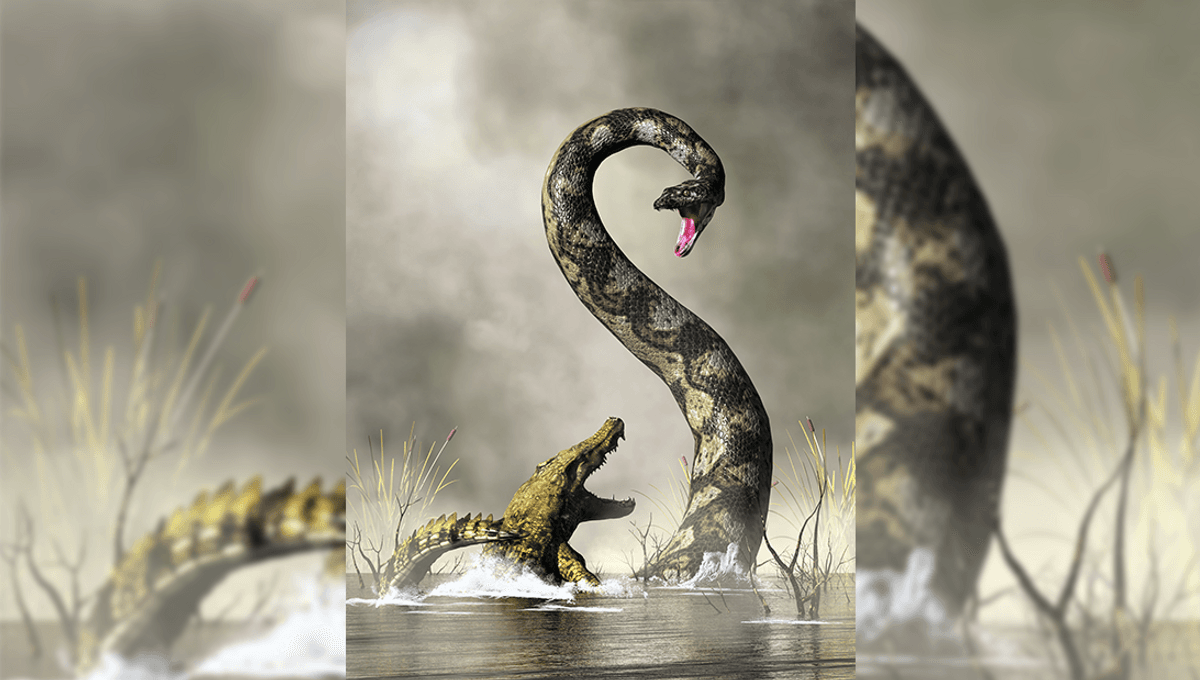
Few animals really deserve the hype they get for being truly massive. While the Fat Bear Week winner has managed to pile on the pounds it has nothing on the absolutely enormous creatures that once roamed the Earth. And though dinosaurs often get all the credit, another giant reptile is worth mentioning: meet Titanoboa.
While the name might sound like the title of a B movie, Titanoboa cerrejonensis was slithering around in the Paleocene approximately 66-56 million years ago. The enormous snake filled the niche left by the extinction of the dinosaurs, becoming the top predator in the tropical South American jungle in which it lived.
In northern Colombia in the region known as Cerrejón, one of the world’s most abundant fossil deposits inside a mine revealed the bones of this spectacular snake. The researchers compared the two best-preserved vertebrates to modern-day living snake species and worked out an approximate size.
Thought to have been around 12.8 to 14.3 meters (42-47 feet) long and estimated to weigh over a tonne, this colossal serpent lived in an area of thick forest and swamp, likely terrorizing all the other animals around at that time.
“Cerrejón is the best, and probably the only, window on a complete ancient tropical ecosystem anywhere in the world,” Carlos Jaramillo, a palaeontologist at the Smithsonian Tropical Research Institute, told Smithsonian Magazine.
These fossils revealed that Titanoboa was a member of the Boidae family. Likely a non-venomous species, Titanoboa was probably not so dissimilar to modern-day boa constrictors; but, rather than using its giant body to crush its prey to death or kill them via suffocation, it would have been an ambush predator, consuming prey with its enormous jaws.
These prey would likely have been giant turtles or crocodile-like species, since fossils of these were also found in the mine.
Titanoboa is the largest snake to have ever lived. Given that it was so large, the researchers suggested that the tropics would have needed to be at average temperatures of at least 30-34°C (86-93°F) to support the metabolism of this giant creature. In this way, these fossils shed light not only on Titanoboa itself, but also the environment in which it was king.
Source Link: Mighty 13-Meter Titanoboa Was The Largest Snake Ever To Slither The Earth